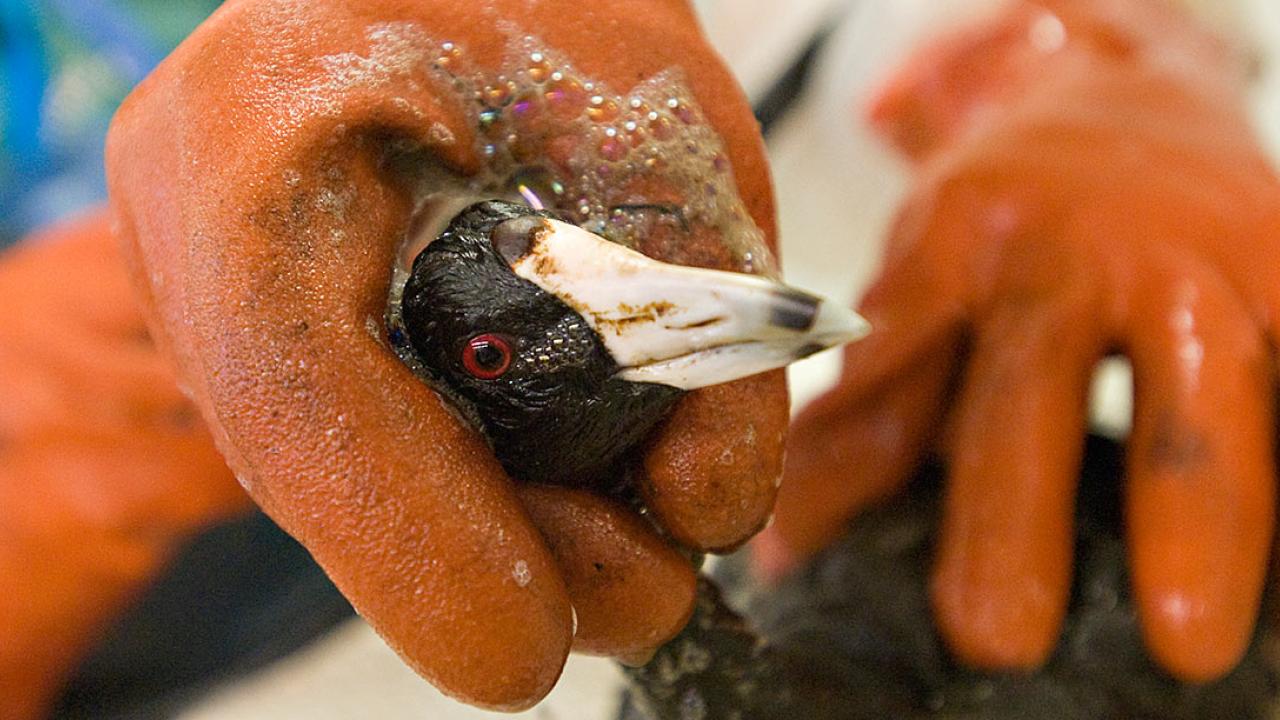First came the American Trader oil spill in Huntington Beach in 1990, followed by a public response to save wildlife covered in oil. The plan included a call to UC Davis’ wildlife experts.
The damaged tanker spilled 400,000 gallons of crude oil, killing 1,000 birds and closing 15 miles of Orange County beaches for three weeks. Public agencies spent at least $35 million to clean up the spill.
When UC Davis veterinarian Michael Ziccardi looks back at this month’s 25th anniversary of the oil spill, he sees a watershed event leading to the Oiled Wildlife Care Network.
‘World model’ for oiled wildlife
Ziccardi directs the center he calls a “world model” for other countries’ use. Started in 1994 through a California law, the network transferred three years later to UC Davis’ Wildlife Health Center. The organization has become the most advanced in the world for rescuing oiled wildlife.
Ziccardi, who earned his veterinary as well as his master’s and doctoral degrees in epidemiology from UC Davis, also co-led the national marine mammal and sea turtle response after the BP Deepwater Horizon spill in 2010.
In this Q&A, he reflects on events that galvanized a dedicated network of people in California to save wildlife from oil spills and how the public can help prevent spills in the future.
How did Orange County residents help form the OWCN?

The American Trader oil spill happened in 1990, almost immediately after Exxon Valdez. Exxon was the first spill to come into people’s living rooms [on the evening news], so American Traderhappened in the backyard of some environmentally conscious people during a period of heightened public attention.
‘Without the public response to American Trader — lead by people living in Orange County who understood the importance of the marine environment — we wouldn’t have nearly the degree of responsiveness we have now.’
— Michael Ziccardi
The federal government was taking steps to revise federal legislation after Exxon, but afterAmerican Trader, California decided that wasn’t good enough. We wanted the best response system in the world. So we set up a second state safety net to fund quicker responses.
The OWCN was created under the Office of Spill Prevention and Response. Without the public response to American Trader — led by people living in Orange County who understood the importance of the marine environment — we wouldn’t have nearly the degree of responsiveness we have now.
OWCN is considered the world model, and we’re contacted by many other countries and nations for help setting up their own networks. In part, because of OWCN’s success, the National Oceanic and Atmospheric Administration asked me to write national guidelines for marine mammal response, which were used in response to the 2010 Deepwater Horizon spill.
Related Stories
What about oil spills might surprise people?
Of the more than 2,000 spills that happen every year off the coast of California alone, many are not petroleum-based or the result of industrial accidents. Fish and vegetable oils have been the most damaging spills of all to seabirds in California responses.
What can people do to help?
The most important action you can take is to learn and use proper disposal techniques for your cooking oils, motor oil and any other household oil. All roads lead to the ocean, and everyone can play an important role in prevention.
If you want to help animals directly, find an OWCN partner organization, such as the Wetlands and Wildlife Care Center or the Los Angeles Oiled Bird Care and Education Center, that accepts volunteers, and apply for their training program. A strong volunteer corps at all partner organizations benefits the network.
